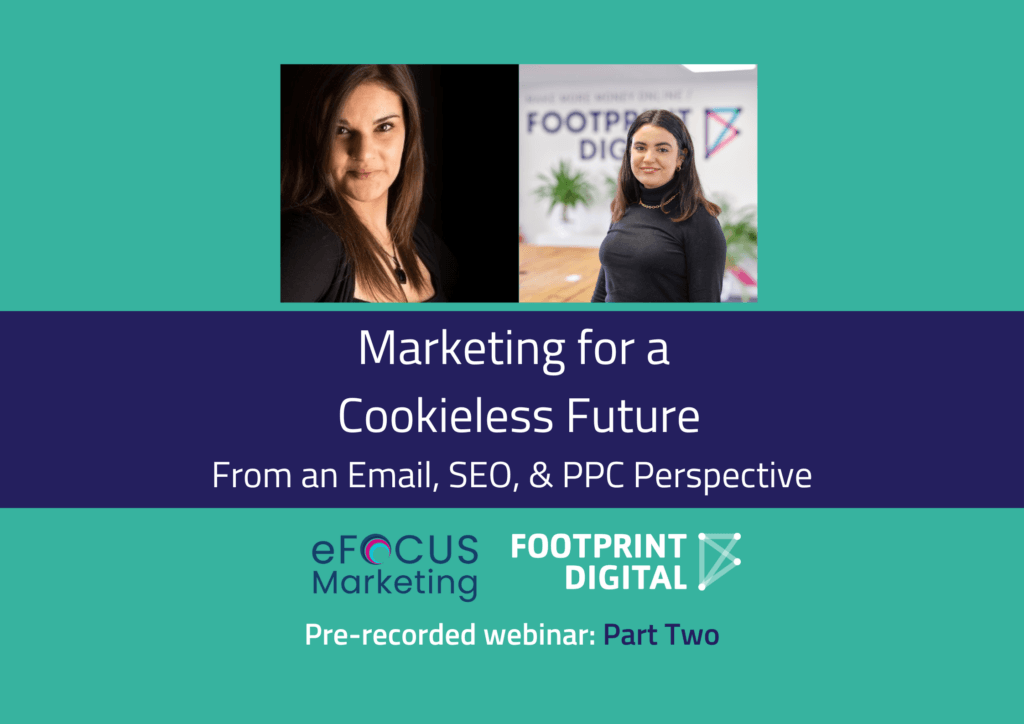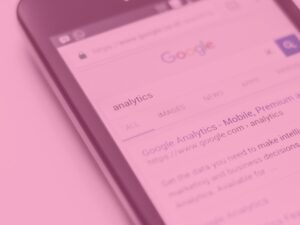
(If you haven’t watch part one, go and watch it here, first).

Read on to find out what Kate and Kaya had to say about different email segments and audiences including lapsed and active, as well as the relationship between email marketing and paid media, or watch the video below.
Kate Barrett: Now let’s look at something very email specific and how can we use that across different channels. Here we want to be thinking about who’s opening and clicking on our emails versus who isn’t opening and clicking on our emails. What can we do with those people? How can we help them?
Really this is thinking about who’s in the ‘win back’ stage and who’s in those other stages?
Within this scenario we need to be thinking about what makes an email subscriber inactive, because market research has identified a natural reduction of your email subscriber list at a rate of about 22.5%.
It’s different for everybody, but the fact is you are going to be losing people from your email list and if you’re not growing more than you’re losing, you’re going to end up without an email list by the end of it.
That drop off is a natural part of the email experience because, shock horror, not everyone wants to keep receiving your emails!
As email marketers, it’s our job to make sure that as many people as possible do get those emails, but if they don’t want them then what are those other channels that they’re engaging with? Have they given you permission on SMS? Can you target them through a letter ad? Can you target them through another form of your marketing?
Users change, and so do their interests
Users change, so does their interest in your products or services and in your brand generally change?
Since the covid pandemic, we’ve seen a massive shift in how loyalty works between customers and brands. Customers were pushed more online and the choice that was available to them changed. They were forced to change their loyalty in some cases from physical to digital, which I think gave some people a taste of changing that brand loyalty and seeing that there might be something better out there.
As Brands, we now have to work harder to build that loyalty and understand the changing interests of our audience based on behavioural data and what they are engaging with in our emails.
Active email segment
We can think about it in a couple of different audience segments.
The first is the people who are active and engaging with your email campaigns.
Doing this based purely on open rate is massively unreliable, so look at whether or not they’ve clicked as well. Link this in with your purchase data because whether someone’s purchased or not puts them in a completely different section of that customer lifecycle consideration or customer loyalty which will change your messaging for them. Whether they’re active will determine what you need to do next in order to target them and better understand them.
What we’re going to do here, particularly for active B2C businesses, is keep giving them exposure, inspiration of the different products that you provide, show them the benefits and maybe we can even give them benefits of being on our email list like early access to sales.
Think about testing content and messaging with your audience. Use your PPC results, use your content on site and look at what’s popular. Look at what’s being talked about on social media and any platforms your audience is active on. Use that in your email strategy to really help and support and inspire your audience. Remember, the best way to keep a subscriber engaged is to send relevant content.
Using your purchase data
Use your purchase data. What have your audience been interested in before? What have they engaged with?
This is where you would use your segmentation or one-to-one personalisation to include dynamic email content. It’s a really core segment to keep engaged but make sure that you’re being helpful to them. Where appropriate you can give them exclusive offers. Let’s say they’ve purchased from you, but haven’t repurchased again within six months. Why not include some dynamic content in your emails that gives them a special offer?
You can also connect your engaged subscribers with different channels; drive them to your social media so they can have that conversation with you. It’s a completely different purpose for that channel versus email. We want to cross pollinate and help each other and learn from the different channels. If you have a conversation on social media push that message out to them on email whatever it might be. Connect everything together and be helpful and inspiring alongside that sales content.
Lapsed email segments – Passive
These are the people who are in the ‘win back’ stage of the life cycle. You’ve either passive or inactive people in your audience. You can break this segment down in three different ways and the automatic campaigns that we might trigger for each of these would be slightly different.
When we plan out a welcome email series for new sign ups, if somebody has signed up, and hasn’t opened or clicked on an email during that entire welcome process you probably want to put them into a reactivation. Something’s not quite right there.
Do we want to leave it for six months or 12 months before we deal with these people? No, if we can, we want to activate them now. So even from that very beginning section of going through acquisition into consideration you can be thinking about making sure that your audience is active.
Then you’ve got people who’ve previously opened or clicked on an email but haven’t done so within a certain amount of time. Now these reactivation email timings will change depending on your business and your average purchase lifecycle.
If you expect somebody to buy again within three months then you can do your passive audience segmentation between four and six months and your inactive segment at 12 months. If you don’t expect somebody to buy from you for a year or two years, then you need to adjust these accordingly and be thinking about that purchase cycle as well.
With these types of people, think about different ways to target them. As they go into passive, we want to re-engage them. You can say to them, ‘we’ve noticed that you haven’t been as engaged with our emails, we want to make sure we’re sending you the right content’. You might want to do a Preference Centre call out. Maybe encourage them to come back and explore what your business offers. You need to send them something different from the norm to catch their attention.
Lapsed email segments – Inactive
Once people get to the point where they’re inactive, these aren’t going to be your highest performing campaigns. But the focus is cleaning up your audience and by looking at a passive segment before they become inactive you’ve got more of a chance of engaging them.
The inactive audience is made up of people where reactivation attempts haven’t worked. Think about a re-permissioning email to ask them if they still want to receive emails from you.
If you’ve got data from other channels that shows the person is still actively purchasing from you but not opening your emails, then you probably don’t want to send a re-permissioning email. Instead, just reduce the frequency of your normal emails, but keep them on the list.
If they’re not purchasing and they’re not engaging with your emails then a re-permissioning is a great way to clean up your list. If they want to stay then hopefully that will be the last chance to capture their attention.
For anyone who’s fallen into this segment, maybe look at your meta ads or paid ads and retargeting to see if they will engage through that channel if they’re not engaging through email.
If you haven’t got this in place it’s a great way to keep that list nice and clean. It’s not gonna be a massive revenue generator but it’s really important for that hygiene, upkeep, and the moving forward of your email list.
Email and Paid Media
Kaya Heaton: As you’ve rightly pointed out, Kate, it’s so important to get those lists as clean as possible, understand where people sit within their communications with you and we can then use these segments across channels.
So, if we’re thinking about Google ads and meta ads and retargeting we can target passive or inactive subscribers with the same offers as in email Through your paid advertising you can target active subscribers differently, active and VIP purchases are engaging with emails and your other content you can change your ads to reflect that loyalty.
Think about how you can keep doing the things right that are working for that active group and then change your strategy for those passive or inactive ones.
We’ve actually got a bit of an example on screen here (check out the video above!) of a way that we think about segmenting for one of our clients.
So, we’ve got different segments here for different types of children’s parties and what can be used here – it’s again very cyclical. So we can use what’s performing well from a paid ads perspective to inform our email strategy.
Maybe we can talk about something that’s performing extremely well in other channels to help reinvigorate those passive subscribers, but on the flip side as well, if we are trying out new segments for paid advertising if we want to use emails a bit of a testing ground, it’s the perfect place so we can then link to multiple different options within email body content and see what is performing well with our active subscribers – those that are loyal that we can rely on feedback from.
This can inform our paid strategy and ideally you want to be doing both at the same time to make sure that you’re making the most of those budgets.
Data from your emails can influence your site and that can influence your paid strategy. We’re using all of these channels at the same time and we’re keeping on top of the learnings that are coming out of them all and all of that leads to content. What is your audience engaging with, what aren’t they, and use that data to craft new content to fill in content gaps, seeing all of this change with data as another opportunity for innovation.








